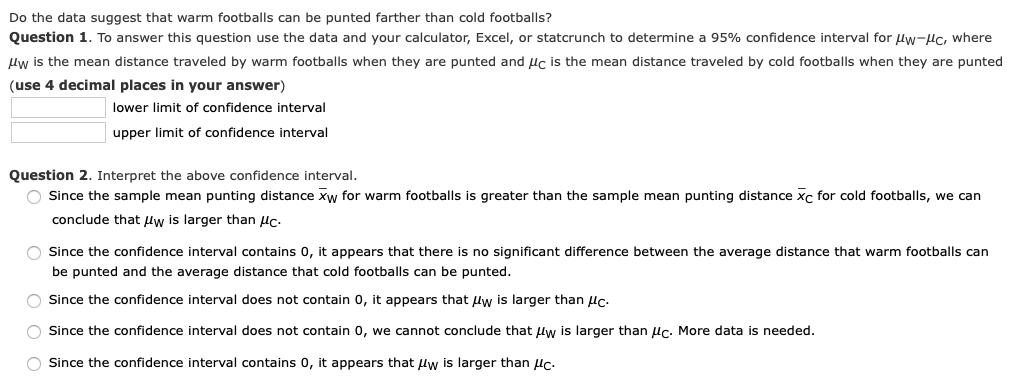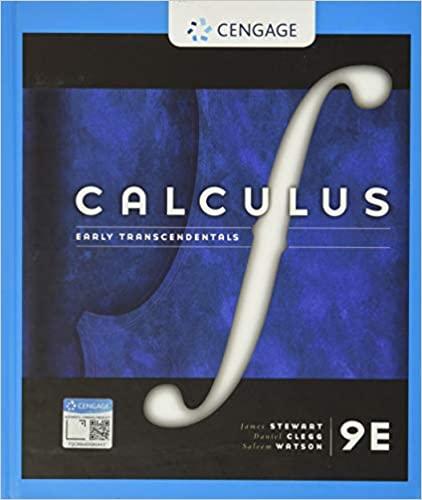I only need the multiple choice part and the lower limit:
Do the warm Miami temperatures help the punter for the Miami Dolphins kick the ball farther than the punter for the Green Bay Packers, who typically punts in frigid Wisconsin temperatures? That is, can a warm football in general be punted farther than a cold football?
Do the warm Miami temperatures help the punter for the Miami Dolphins kick the ball farther than the punter for the Green Bay Packers, who typically punts in frigid Wisconsin temperatures? That is, can a warm football in general be punted farther than a cold football? To investigate this question, from 20 similar footballs inflated with the same air pressure, 10 were randomly selected to be placed in a refrigerator for 1 hour and the other 10 were placed for 1 hour in a room with a temperature of 85 degrees . After being heated or cooled for 1 hour each ball was placed in an identical insulated container to keep its temperature as constant as possible. An assistant then randomly selected a ball and handed it to a punter from an NFL team who had volunteered for the project. The punter wore gloves so he could not feel the temperature of the ball he was punting. The yards traveled by each of the 20 punted balls was recorded (the punter was allowed to rest for 5 minutes after each set of 4 kicks so that punter fatigue would not be a factor). The distances in yards traveled by the 20 punts are shown below. Warm Footballs 44 53 148 49 52 158 64 54 56 55 Cold Footballs 46 46 154 47 57 44 51 51 52 46Do the data suggest that warm footballs can be punted farther than cold footballs? Question 1. To answer this question use the data and your calculator, Excel, or statcrunch to determine a 95% confidence interval for /w-/c, where Aw is the mean distance traveled by warm footballs when they are punted and /c is the mean distance traveled by cold footballs when they are punted (use 4 decimal places in your answer) lower limit of confidence interval upper limit of confidence interval Question 2. Interpret the above confidence interval. Since the sample mean punting distance xw for warm footballs is greater than the sample mean punting distance xc for cold footballs, we can conclude that /w is larger than /c. Since the confidence interval contains 0, it appears that there is no significant difference between the average distance that warm footballs can be punted and the average distance that cold footballs can be punted. Since the confidence interval does not contain 0, it appears that /w is larger than /c. Since the confidence interval does not contain 0, we cannot conclude that /w is larger than /c. More data is needed. Since the confidence interval contains 0, it appears that //w is larger than /c








